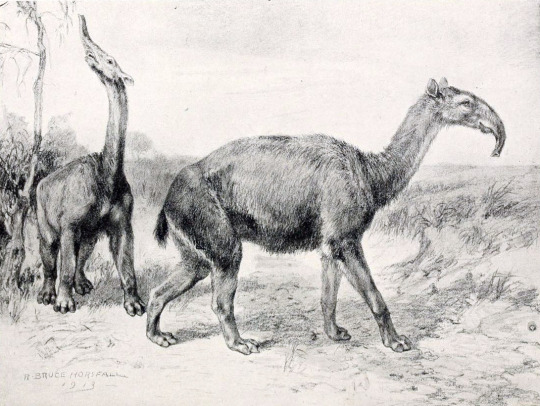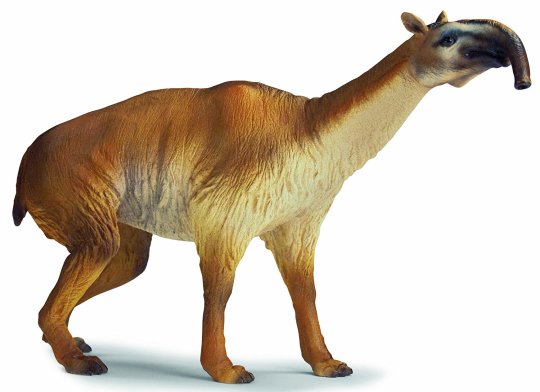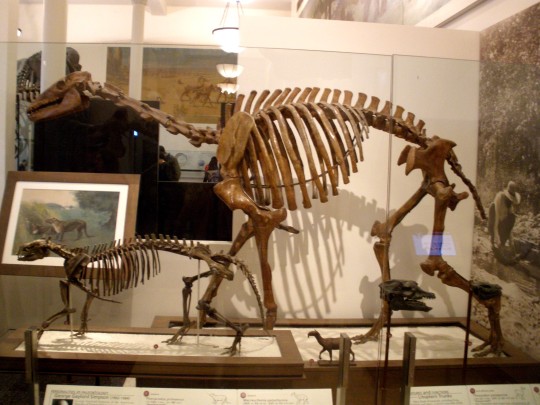#litopterna
Explore tagged Tumblr posts
Text
It's time for a little bit more recent PBS Eons work this week:


• The metatherian predator Arctodictis and the litoptern ungulate Thoatherium from "The Mystery of South America's False Horses"
youtube
———
NixIllustration.com | Tumblr | Patreon
#science illustration#paleon#paleoart#palaeoblr#pbs eons#video#arctodictis#borhyaenidae#aparassodonta#metatheria#thoatherium#proterotheriidae#litopterna#meridiungulata#south american native ungulates#ungulate#mammal#art#youtube#Youtube
478 notes
·
View notes
Text

Southernmost record of Megadolodus (Litopterna, Proterotheriidae, Megadolodinae) from the late Middle Miocene of Fitzcarrald, Peruvian Amazonia, and mesowear analysis of diet in megadolodine litopterns
Wilson, Carillo, et al.
ABSTRACT
Megadolodinae is a clade of tropical bunodont litopterns that includes three previously recognized species from Miocene fossil sites from northern South America. Here, we report an additional occurrence of Megadolodus molariformis from the Middle Miocene exposures at the Fitzcarrald arch (Peruvian Amazonia), based on dental material, which represents the southernmost record of the clade. This discovery further increases the faunal similarity between Fitzcarrald and the coeval La Venta fauna of Colombia. Given the convergent evolution of the bunodont dentition of megadolodines with suoids (Old World pigs and New World peccaries), we tested the hypothesis of frugivory in megadolodines with a mesowear angle approach using modern pigs and peccaries. These analyses differentiate the diet of modern suoids and suggest that megadolodines had a more abrasive diet than most of these taxa, except for the grazing warthogs. The dentition of megadolodines shows similar levels of abrasion to modern babirusas, thereby suggesting that the latter may represent an appropriate modern analog.
Read the paper here:
Full article: Southernmost record of Megadolodus (Litopterna, Proterotheriidae, Megadolodinae) from the late Middle Miocene of Fitzcarrald, Peruvian Amazonia, and mesowear analysis of diet in megadolodine litopterns
39 notes
·
View notes
Text






Macrauchenia
(temporal range: 7-0.01 mio. years ago)
[text from the Wikipedia article, see also link above]
Macrauchenia ("long llama", based on the now-invalid llama genus, Auchenia, from Greek "big neck") was a large, long-necked and long-limbed, three-toed native South American ungulate in the order Litopterna.[1] The genus gives its name to its family, the Macraucheniidae or "robust litopterns". Like other litopterns, it is most closely related to the odd-toed ungulates (Perissodactyla), from which litopterns diverged approximately 66 million years ago. The oldest fossils in the genus date to the late Miocene, around seven million years ago, and M. patachonica disappears from the fossil record during the late Pleistocene, around 20,000-10,000 years ago. M. patachonica is one of the last and best known member of the family and is known primarily from the Luján Formation in Argentina, but is known from localities across southern South America. Another genus of macraucheniid Xenorhinotherium was present in northeast Brazil and Venezuela during the Late Pleistocene. The type specimen was discovered by Charles Darwin during the voyage of the Beagle. In life, Macrauchenia may have resembled a humpless camel, though the two taxa are not closely related.[2] It fed on plants in a variety of environments across what is now South America. Among the species described, M. patachonica and M. ullomensis are considered valid; M. boliviensis is considered a nomen dubium; and M. antiqua (or M. antiquus) has been moved to the genus Promacrauchenia.
7 notes
·
View notes
Photo

11 notes
·
View notes
Photo

A mother Macrauchenia patachonica feeds her leucistic calf on the windblown pampas of Argentina. And no, there’s not much evidence for a trunk, despite popular belief.
#macrauchenia#leucism#art#paleoart#paleo#paleoblr#palaeoblr#pampas#argentina#pleistocene#mammals#litopterna#prehistoric mammals
76 notes
·
View notes
Photo

(via GIPHY)
#giphy#funny#art#trippy#animated#fruit#tropical#pineapple#tail#leopard#juliafarkas#litopterna#shape shifter#kreifzsuzsanna
0 notes
Photo

http://ift.tt/2BZ5XW3 Follow for new trendy #gif http://248gifs.ca lol, loop, yes, hello, red, ok, juliafarkas, litopterna, likedog
1 note
·
View note
Photo

jb 10/31/17 shelter cave 14 Questionable timelines Macrauchenia, order: litopterna (though frankly I'm having a hard time reading the reference from my phone so maybe I have that backwards. Anyway, some kinda cenozoic camel)
3 notes
·
View notes
Photo

0 notes
Photo

0 notes
Text

Neolicaphrium recens here might look like some sort of early horse, but this little mammal was actually something else entirely.
Known from southern South America during the late Pleistocene to early Holocene, between about 1 million and 11,000 years ago, Neolicaphrium was the last known member of the proterotheriids, a group of South American native ungulates that were only very distantly related to horses, tapirs, and rhinos. Instead these animals evolved their remarkably horse-like body plan completely independently, adapting for high-speed running with a single weight-bearing hoof on each foot.
Neolicaphrium was a mid-sized proterotheriid, standing around 45cm tall at the shoulder (~1'6"), and unlike some of its more specialized relatives it still had two small vestigial toes on each foot along with its main hoof. Tooth microwear studies suggest it had a browsing diet, mainly feeding on soft leaves, stems, and buds in its savannah woodland habitat.
It was one of the few South American native ungulates to survive through the Great American Biotic Interchange, when the formation of the Isthmus of Panama allowed North and South American animals to disperse into each other's native ranges. While many of its relatives had already gone extinct in the wake of the massive ecological changes this caused, Neolicaphrium seems to have been enough of a generalist to hold on, living alongside a fairly modern-looking selection of northern immigrant mammals such as deer, peccaries, tapirs, foxes, jaguars… and also actual horses.
Some of the earliest human inhabitants of South America would have seen Neolicaphirum alive before its extinction. We don't know whether they had any direct impact on its disappearance – but since the horses it lived alongside were hunted by humans and also went extinct, it's possible that a combination of shifting climate and hunting pressure pushed the last of the little not-horses over the edge, too.
———
NixIllustration.com | Tumblr | Twitter | Patreon
#science illustration#paleontology#paleoart#palaeoblr#neolicaphrium#proterotheriidae#litopterna#meridiungulata#south american native ungulates#panperissodactyla#ungulate#mammal#art#convergent evolution#not-horse#a phony pony#quaternary extinction
485 notes
·
View notes
Photo

With every post, a smile, ت
0 notes
Text
when i was little i was obsessed with pleistocene megafauna. i had fantasies about litopterna living in my woods
1 note
·
View note
Photo

5 notes
·
View notes
Photo

New trending GIF tagged lol, loop, yes, hello, red, ok, juliafarkas, litopterna, likedog via Giphy http://ift.tt/2nKuRFM
0 notes
Photo

(via GIPHY) I'm going to bed for all scandal made in Meghan & Harry this will wait for tomorrow morning for me.
Good night/ Bonne nuit tout le monde
3 notes
·
View notes